Sometimes water out of the faucet that has set for two days has a pH less than 6.5 and needs to be raised. This is common in New England. A pH of 6.5 will reduce the growth of beneficial bacteria by 90%. A pH of 6.0 will virtually stop beneficial bacteria from oxidizing ammonia to nitrate. So a low pH is not desirable in a closed system like an aquarium.
A low pH can give ammonia and nitrite spikes. The high ammonia at low pH is surprisingly non-toxic. But the nitrite is very toxic at low pH.
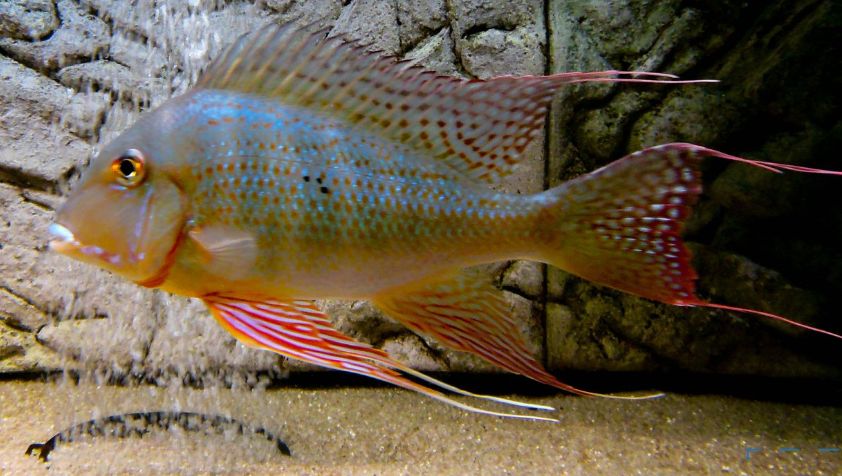
Some people have livebearers or Lake Malawi cichlids and they erroneously believe these fish do better at buffered high pH’s. And some people want stable pH’s with no fluctuations, a condition best achieved with a high KH, high pH water.
And sometimes people feel more comfortable with a high pH with a high KH as the likelihood of “old tank syndrome” is very much reduced. If one doesn’t do water changes often, then acid nitrate can build up in an aquarium and cause a low pH that is accompanied by nitrate levels well over 160 ppm. If a low pH is accompanied by very high nitrates, caution must be exercised. This is called “old tank syndrome” and must be handled very carefully to prevent killing the fish. A 90% water change is the best solution. Note that “old tank syndrome” is rare if one does any water changes at all.
This link goes into “old tank syndrome” in detail:
Also note that some hobbyists think that a buffered higher pH will prevent an ammonia spike, otherwise commonly called a “crash”. This is a myth. A buffered high pH will not prevent a ammonia “crash” from occurring. It will only prevent a pH crash from happening. The majority of ammonia spikes do not have pH drops as the causation.
There are two ways to go about raising the pH: crushed coral and carbonate salts.

1 Calcium Carbonate
Calcium carbonate is a chemical which is extremely common in rocks and in nature. It is limestone, marble, holey rock, coral, crushed coral, shells, crushed shells and aragonite sand. Adding any of these to the aquarium in the form of rocks, ornaments or substrate will up the pH to 7.6 to 7.9 in two days or so.
One very easy way to make soft or acidic water fine for any fish is to use a bag of crushed coral, aragonite sand or crushed shells in the filter. This buffers to an excellent 7.6 to 7.9 pH. This is an excellent pH even for Amazon fish. But note that the “7.6 to 7.9” is an average. At times an aquarium with crushed coral can be 7.2 pH and at times it can be 8.3 pH.
Note that there is one downside to crushed coral and crushed shells. Most crushed coral and crushed shells have substantial amounts of slightly soluble phosphate in them. This phosphate can produce algae growth in an aquarium. Aragonite has much less phosphate and crushed limestone has virtually no soluble phosphate.
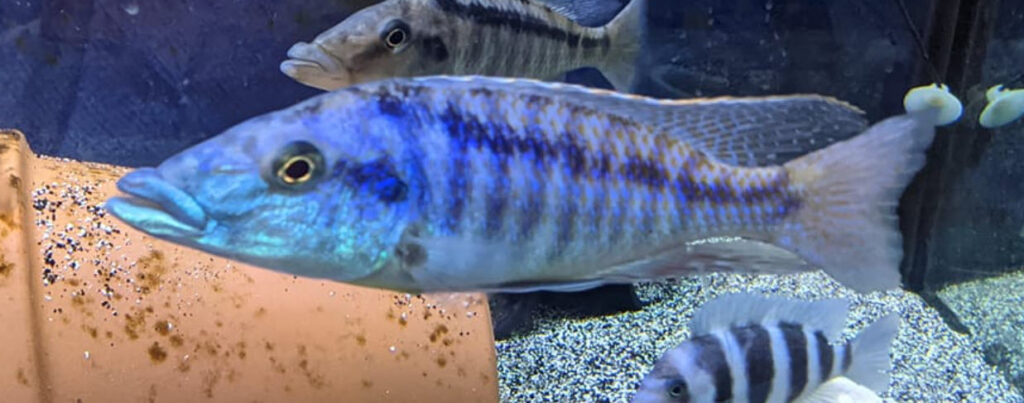
Crushed coral and aragonite take days or even weeks to work. If they are placed in an area of high flow like inside a filter they will work much better. A bag of crushed coral placed in the filter works well. A bag of crushed coral placed in a corner of the tank will do nothing. If one puts a bag of crushed coral in the filter the pH will then rise slowly to 7.6 to 7.9 pH over the span of a few days.
7.6 to 7.9 pH is an excellent pH even for Amazon fish. To understand why fish all fish do well in this pH go to this link:
4.4.1. Onbelangrijkheid van pH
And only a very small amount of crushed calcium carbonate is needed. A few tablespoons will typically last three to six months. Typically (but not always) after three to six months the crushed carbonate will become coated with an insoluble phosphate and stop buffering.
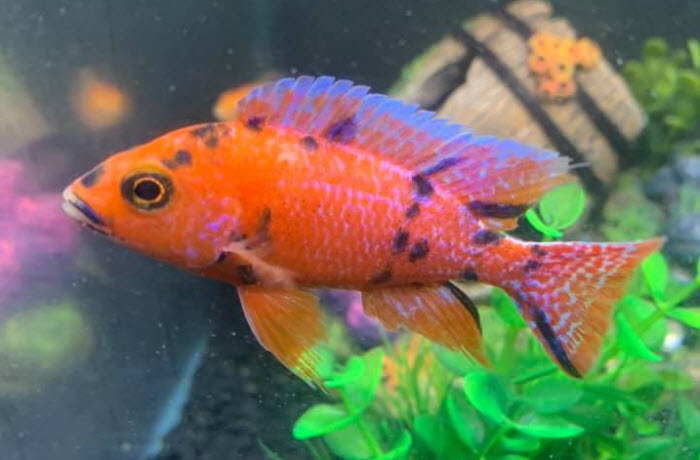
Note that one of the many myths of fish keeping is that calcium carbonate such as crushed coral will buffer to an 8.5 pH or even higher and as such can create bad conditions for some fish. This is simply false, another of many aquarium myths. All forms of calcium carbonate (coral, shells, limestone, aragonite, etc.) only dissolve very slightly to what is called an “equilibrium point”. It’s the mechanism which forms caverns.
So, any form of calcium carbonate will only raise pH to roughly 7.6 to 7.9 pH. At a pH of 7.6 to 7.9 the water will become “saturated” with calcium carbonate and no more can dissolve. If the water is already 8.0 pH or higher the calcium carbonate will do nothing. This was confirmed by extensive testing. To see the testing go to this link:

2 Carbonate Salts
One teaspoon of baking soda per 25 gallons (94.6 liter) of water will typically give on a pH of between 7.5 and 8.0. The addition must be with the change water for amount in the water changes. So, changing out 50% of a fifty-gallon aquarium will need one teaspoon of baking soda.
This addition is simple and very safe. Contrary to popular myth you can simply sprinkle the baking soda in the tank. It will rapidly dissolve and won’t hurt the fish. Fish are not “shocked” or damaged by changes in pH. The water in a lake or pond can be 6.5 pH five feet down and 8.0 pH one foot down and the fish swim up and down through these waters constantly without harm.
What is important is to not obsess over the endpoint. The difference between 7.5 and 8.5 is very tiny and will not be noticed by any fish, contrary to popular myth. And , depending on the amount of carbon dioxide gas dissolved in the water at at given point in time, the pH at any given point in time can go from 7.0 to even 8.6 in the same aquarium.
Baking soda does take time to work. Add the baking soda to the tank. Wait a few days. If the pH is over 7.5 stop adding baking soda. If it is below 7.5 add some more and then wait a few days again and repeat.
A more rapid change in pH can be obtained by using sodium carbonate, calcium carbonate or potassium carbonate at half the loading of the sodium bicarbonate. This is the preferred method if one is cycling an aquarium as speed is normally desirable in cycling.
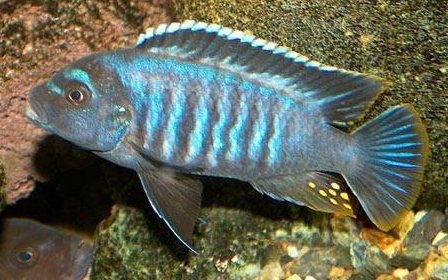
Buffering the Malawi Aquarium
Malawi cichlids do just fine down to 7.0 pH. But if one is a perfectionist and has a Malawi aquarium.
You can add the following recipe to 25 gallons (94.6 liter) of neutral soft change water:
- 1/4 teaspoon salt substitute (potassium chloride)
- 1/4 teaspoon Epsom salts (magnesium sulfate)
- 1 teaspoon Plaster of Paris (calcium sulfate)
- 1 1/2 teaspoons baking soda (sodium bicarbonate)
This should typically give about an 8.0 pH after a week or so. This duplicates the water chemistry of Lake Malawi very closely. There is no objective science which justifies this addition. But it is easy to do, rapidly effective, very cheap and has no downside. It buffers and stabilizes the aquarium much better than something like “Malawi Buffer” or “Lake Salt” and is much cheaper. Note that commercial products can’t duplicate this recipe as it will turn to cement if premixed and put on the shelf.
Note that the easiest and the most effective addition one can make to duplicate Lake Malawi water is to simply add two teaspoons per 25 gallons (94.6 liter) of good old baking soda. The Epsom salts and Plaster of Paris cause white deposits to build up at the waterline on an aquarium and are undesirable. The potassium addition is also typically unnecessary.
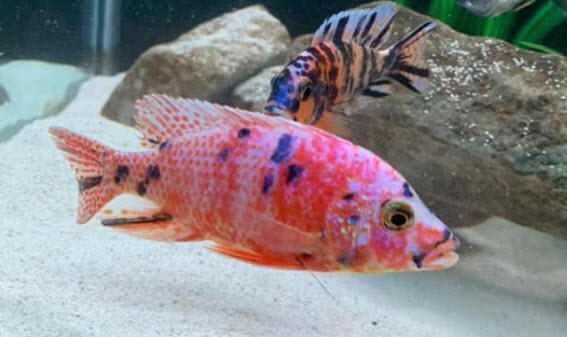
pH in meer detail
Voor diegenen die geïnteresseerd zijn in een meer diepgaande bespreking van pH, klik op de volgende links:
Link naar algemene discussie over pH:
Link naar een meer diepgaande discussie over pH en hoe onbelangrijk dit is in het aquarium:
Een moeilijk te begrijpen onderdeel van pH is het concept van "buffering". Sommigen vinden het belangrijk om een aquarium te bufferen.
4.4.2. Het bufferen van het water
De pH gaat constant op en neer in een aquarium vanwege koolstofdioxide en hoe het in wisselwerking staat met water. Dit is een ander relatief complex onderwerp:

Er zijn situaties waarin men een pH hoger dan 8,5 heeft en men de pH moet verlagen. Deze link behandelt hoe u de pH van water veilig kunt verlagen
Veel mensen denken dat vissen die in een breed scala aan wateren zijn gekweekt, dus een breed scala aan wateren kunnen verdragen. Dit is gewoon een mythe.
En velen denken dat vissen in een zeer stabiele pH of temperatuur moeten worden gehouden en dat snelle veranderingen schadelijk zijn voor de vissen. Dit is weer een andere mythe.


